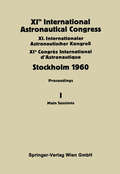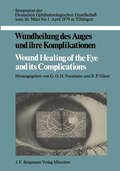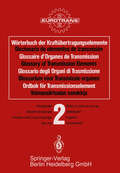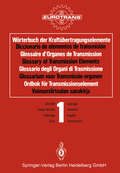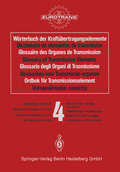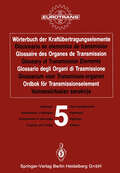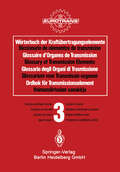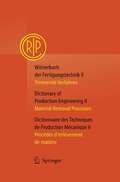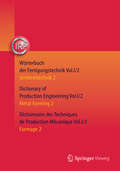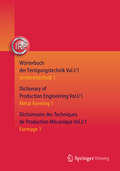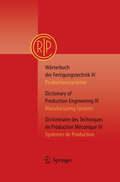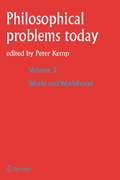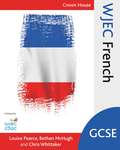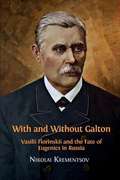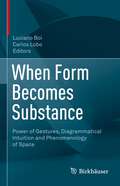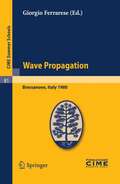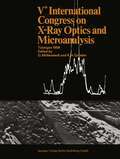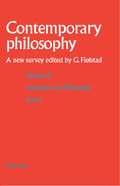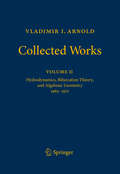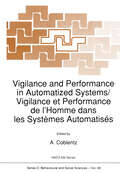- Table View
- List View
Yeats's Mask - Yeats Annual No. 19
by Margaret Harper Warwick GouldYeats’s Mask, Yeats Annual No. 19 is a special issue in this renowned research-level series. Fashionable in the age of Wilde, the Mask changes shape until it emerges as Mask in the system of A Vision. Chronologically tracing the concept through Yeats’s plays and those poems written as ‘texts for exposition’ of his occult thought which flowers in A Vision itself (1925 and 1937), the volume also spotlights ‘The Mask before The Mask’ numerous plays including Cathleen Ni-Houlihan, The King’s Threshold, Calvary, The Words upon the Window-pane, A Full Moon in March and The Death of Cuchulain. There are excurses into studies of Yeats’s friendship with the Oxford don and cleric, William Force Stead, his radio broadcasts, the Chinese contexts for his writing of ‘Lapis Lazuli’. His self-renewal after The Oxford Book of Modern Verse, and the key occult epistolary exchange ‘Leo Africanus’, edited from MSS by Steve L. Adams and George Mills Harper, is republished from the elusive Yeats Annual No. 1 (1982). The essays are by David Bradshaw, Michael Cade-Stewart, Aisling Carlin, Warwick Gould, Margaret Mills Harper, Pierre Longuenesse, Jerusha McCormack, Neil Mann, Emilie Morin, Elizabeth Müller and Alexandra Poulain, with shorter notes by Philip Bishop and Colin Smythe considering Yeats’s quatrain upon remaking himself and the pirate editions of The Land of Heart’s Desire. Ten reviews focus on various volumes of the Cornell Yeats MSS Series, his correspondence with George Yeats, and numerous critical studies. Yeats Annual is published by Open Book Publishers in association with the Institute of English Studies, University of London.
XIth International Astronautical Congress Stockholm 1960: Proceedings Vol I: Main Sessions
by C. W. P. Reuterswärd A. HjertstrandWundheilung des Auges und ihre Komplikationen / Wound Healing of the Eye and its Complications: Symposion der Deutschen Ophthalmologischen Gesellschaft vom 30. März bis 1. April 1979 in Tübingen (Symposien der Deutschen Ophthalmologischen Gesellschaft)
by G O H Naumann B. P. GloorWörterbuch der Kraftübertragungselemente / Diccionario elementos de transmisión / Glossaire des Organes de Transmission / Glossary of Transmission Elements / Glossario degli Organi di Trasmissione / Glossarium voor Transmissie-organen / Ordbok för Transmissionselement / Voimansiirtoalan sanakirja: Band 2 · Zahnradgetriebe / Tomo 2 · Reductores de engranajes / Volume 2 · Ensembles montés à base d’engrenages / Volume 2 · Gear Units / Volume 2 · Riduttori di velocità ad ingranaggi / Deel 2 · Tandwielkasten / Band 2 · ·Kuggväxlar / Osa 2 · Hammasvaihteet
by EurotransWörterbuch der Kraftübertragungselemente / Diccionario de elementos de transmisión / Glossaire d’Organes de Transmission / Glossary of Transmission Elements / Glossario degli Organi di Trasmissione / Glossarium voor Transmissie-organen / Ordbok för Transmissionselement / Voimansiirtoalan sanakirja: Band 1 · Zahnräder / Tomo 1 · Ruedas dentadas / Volume 1 · Engrenages / Volume 1 · Gears / Volume 1 · Ingranaggi / Deel 1 · Tandwielen / Band 1 · Kugghjul / Osa 1 · Hammaspyörät
by EurotransWörterbuch der Kraftübertragungselemente / Diccionario de elementos de transmisión / Glossaire des Organes de Transmission / Glossary of Transmission Elements / Glossario degli Organi di Trasmissione / Glossarium voor Transmissie-organen / Ordbok för Transmissionselement / Voimansiirtoalan sanakirja: Band 4 · Zahnradfertigung und -kontrolle / Tomo 4 · Fabricación de engranages y verificatión / Volume 4 · Fabrication des engrenages et contrôle / Volume 4 · Gear Manufacture and Testing / Volume 4 · Fabbricazione degli ingranaggi e loro controllo / Deel 4 · Tandwielfabrikage en kwaliteitskontrole / Band 4 · Produktion och kontroll av kugghjul / Osa 4 · Hammaspyörien valmistus ja tarkastus
by EurotransWörterbuch der Kraftübertragungselemente / Diccionario de elementos de transmisión / Glossaire des Organes de Transmission / Glossary of Transmission Elements / Glossario degli Organi di Trasmissione / Glossarium voor Transmissie-organen / Ordbok för Transmissionselement / Voimansiirtoalan sanakirja: Band 5 · Kupplungen / Tomo 5 · Acoplamientos y embragues / Volume 5 · Accouplements et embrayages / Volume 5 · Couplings and Clutches / Volume 5 · Giunti (accoppiamenti) / Deel 5 · Koppelingen / Band 5 · Koppelingar / Osa 5 · Kytkimet
by EurotransWörterbuch der Kraftübertragungselemente / Diccionario de elementos de transmisión / Glossaire des Organes de Transmission / Glossary of Transmission Elements / Glossario degli Organi di Trasmissione / Glossarium voor Transmissie-organen / Ordbok för Transmissionselement / Voimansiirtoalan sanakirja: Band 3 · Stufenlos einstellbare Getriebe / Tomo 3 · Variadores de velocidad / Volume 3 · Variateurs de vitesse / Volume 3 · Speed Variators / Volume 3 · Variatori di velocità / Deel 3 · Regelbare aandrijvingen (variatoren) / Band 3 · Steglöst inställbara växlar / Osa 3 · Portaattomasti säädettävät vaihteet
by EurotransWörterbuch der Fertigungstechnik / Dictionary of Production Engineering / Dictionnaire des Techniques de Production Mécanique Vol. II: Trennende Verfahren / Material Removal Processes / Procédés d’enlèvement de matière
by Collège International pour l’Etude Scientifique des Techniques de Production MécaniqueWörterbuch der Fertigungstechnik. Dictionary of Production Engineering. Dictionnaire des Techniques de Production Mécanique Vol.I/2: Umformtechnik 2/Metal Forming 2/Formage 2
by R. P. C. OfficeThis part of a tri-lingual edition of the CIRP Dictionary of Production Engineering was compiled under the auspices of the International Institution of Production Engineering Research (C.I.R.P.) headquartered in Paris. Volumes I.1 and I.2 contain about 3400 terms for metal forming. They include: General terms of metal forming; Hot and die forging; Cold and warm forging and sheet metal working.Precise definitions are provided for nearly all terms, illustrations are included where needed. In addition, reference is made to national and international standards. Alphabetical indices for each of the three languages provide easy access to the terms.
Wörterbuch der Fertigungstechnik. Dictionary of Production Engineering. Dictionnaire des Techniques de Production Mécanique Vol. I/1: Umformtechnik 1/Metal Forming 1/Formage 1
by R. P. C. OfficeThis part of a tri-lingual edition of the CIRP Dictionary of Production Engineering was compiled under the auspices of the International Institution of Production Engineering Research (C.I.R.P.) headquartered in Paris.Volumes I.1 and I.2 contain about 3400 terms for metal forming. They include: General terms of metal forming; Hot and die forging; Cold and warm forging and sheet metal working.Precise definitions are provided for nearly all terms, illustrations are included where needed. In addition, reference is made to national and international standards. Alphabetical indices for each of the three languages provide easy access to the terms.
Wörterbuch der Fertigungstechnik Bd. 3 / Dictionary of Production Engineering Vol. 3 / Dictionnaire des Techniques de Production Mécanique Vol. 3: Produktionssysteme / Manufacturing Systems / Systèmes de Production
by C.I.R.P., ParisDans ce volume III sont décrits des entités liées aux techniques de production comme les machines-outils, les systèmes de fabrication, les éléments de machines et leurs propriétés, ainsi que les différents postes de travail. D’autres concepts concernant la commande des fabrications avec leur préparation, la métrologie des procédés et leur surveillance, les systèmes informatiques, les CAO/FAO et les enregistrements de données, ainsi que la planification de la production et les études de fabrication, le flux des matériaux et la logistique, le stockage, les machines de manutention et de transport, le calcul des coûts et l’assurance qualité.
World and Worldhood / Monde et Mondanéité (Philosophical Problems Today #3)
by Peter Kemp Institut International de PhilosophIn this book philosophers try to answer the following question: What is globalization and what does "globe" or "world" (monde) signify? Rémi Brague returns to the Greek idea of the cosmos in order to track the worldhood (mondanéité) of the world, that is, the process by which the idea of the world is formed. Don Ihde shows how a world has developed, in which technologies are no longer considered neutral means serving the ends of human action, but become the very means by which people exist in the world. Vittorio Mathieu describes the economical world at two levels – that of the individual and that of society. Tomonobu Imamichi analyses the capacity of aesthetic experience to disclose a world other than the world of technological efficiency. Francisco Miró Quesada C. emphasises that the great political questions are not solvable without worldviews that express value systems. David Rasmussen describes sensus communis as a cosmopolitan concept, which founds a political globalization of the world. And Peter Kemp attempts to grasp the meaning of that globalization upon which the destiny of our planet depends.
WJEC GCSE French (PDF)
by Bethan McHugh Chris Whittaker Louise PearceWe are delighted to announce that we are working closely with WJEC to ensure endorsement of a new series of textbooks for modern foreign languages. This textbook covers the reformed GCSEs for Wales, which will be taught from 2016 and awarded for the first time in 2018. This new textbook, covering the French GCSE qualification, has been designed in conjunction with examiners, specification developers and experienced teachers to support learners through the challenges of the new specifications. The textbook offers engaging and relevant content and provides comprehensive coverage of the WJEC themes and sub-themes, incorporating all of the new exam components, including: Literary and authentic texts Listening and reading tasks that correspond to the regulator s requirements (please note the required audio files are available with the relevant teacher guide) Role plays, photo cards and conversation questions Translation (from and into French) Increased focus on grammar including grammar in context sections Opportunities for stretch and challenge
Without Trace: An Utterly Gripping Detective Crime Thriller With An Unexpected Twist (Di Geraldine Steel Ser. #20)
by Leigh RussellWith and Without Galton: Vasilii Florinskii and the Fate of Eugenics in Russia
by Nikolai KrementsovIn 1865, British polymath Francis Galton published his initial thoughts about the scientific field that would become ‘eugenics.’ The same year, Russian physician Vasilii Florinskii addressed similar issues in a sizeable treatise, entitled Human Perfection and Degeneration. Initially unheralded, Florinskii’s book would go on to have a remarkable afterlife in twentieth- and twenty-first-century Russia. <p><p> In this lucid and insightful work, Nikolai Krementsov argues that the concept of eugenics brings together ideas, values, practices, and fears energised by a focus on the future. It has proven so seductive to different groups over time because it provides a way to grapple with fundamental existential questions of human nature and destiny. With and Without Galton develops this argument by tracing the life-story of Florinskii’s monograph from its uncelebrated arrival amid the Russian empire’s Great Reforms, to its reissue after the Bolshevik Revolution, its decline under Stalinism, and its subsequent resurgence: first, as a founding document of medical genetics, and most recently, as a manifesto for nationalists and racial purists. <p> Krementsov’s meticulously researched ‘biography of a book’ sheds light not only on the peculiar fate of eugenics in Russia, but also on its convoluted transnational history, elucidating the field’s protean nature and its continuing and contested appeal to diverse audiences, multiple local trajectories, and global trends. It is required reading for historians of eugenics, science, medicine, education, literature, and Russia, and it will also appeal to the general reader looking for a deeper understanding of this challenging subject.
With and Without Galton: Vasilii Florinskii And The Fate Of Eugenics In Russia
by Nikolai KrementsovIn 1865, British polymath Francis Galton published his initial thoughts about the scientific field that would become ‘eugenics.’ The same year, Russian physician Vasilii Florinskii addressed similar issues in a sizeable treatise, entitled Human Perfection and Degeneration. Initially unheralded, Florinskii’s book would go on to have a remarkable afterlife in twentieth- and twenty-first-century Russia. In this lucid and insightful work, Nikolai Krementsov argues that the concept of eugenics brings together ideas, values, practices, and fears energised by a focus on the future. It has proven so seductive to different groups over time because it provides a way to grapple with fundamental existential questions of human nature and destiny. With and Without Galton develops this argument by tracing the life-story of Florinskii’s monograph from its uncelebrated arrival amid the Russian empire’s Great Reforms, to its reissue after the Bolshevik Revolution, its decline under Stalinism, and its subsequent resurgence: first, as a founding document of medical genetics, and most recently, as a manifesto for nationalists and racial purists. Krementsov’s meticulously researched ‘biography of a book’ sheds light not only on the peculiar fate of eugenics in Russia, but also on its convoluted transnational history, elucidating the field’s protean nature and its continuing and contested appeal to diverse audiences, multiple local trajectories, and global trends. It is required reading for historians of eugenics, science, medicine, education, literature, and Russia, and it will also appeal to the general reader looking for a deeper understanding of this challenging subject. Victoria College, University of Toronto, has generously contributed to the publication of this volume.
When Form Becomes Substance: Power of Gestures, Diagrammatical Intuition and Phenomenology of Space
by Luciano Boi Carlos LoboThis interdisciplinary volume collects contributions from experts in their respective fields with as common theme diagrams.Diagrams play a fundamental role in the mathematical visualization and philosophical analysis of forms in space. Some of the most interesting and profound recent developments in contemporary sciences, whether in topology, geometry, dynamic systems theory, quantum field theory or string theory, have been made possible by the introduction of new types of diagrams, which, in addition to their essential role in the discovery of new classes of spaces and phenomena, have contributed to enriching and clarifying the meaning of the operations, structures and properties that are at the heart of these spaces and phenomena.The volume gives a closer look at the scope and the nature of diagrams as constituents of mathematical and physical thought, their function in contemporary artistic work, and appraise, in particular, the actual importance of the diagrams of knots, of braids, of fields, of interaction, of strings in topology and geometry, in quantum physics and in cosmology, but also in theory of perception, in plastic arts and in philosophy. The editors carefully curated this volume to be an inspiration to students and researchers in philosophy, phenomenology, mathematics and the sciences, as well as artists, musicians and the general interested audience.
Wave Propagation: Lectures given at a Summer School of the Centro Internazionale Matematico Estivo (C.I.M.E.) held in Bressanone (Bolzano), Italy, June 8-17, 1980 (C.I.M.E. Summer Schools #81)
by Giorgio FerrareseLectures: A. Jeffrey: Lectures on nonlinear wave propagation.- Y. Choquet-Bruhat: Ondes asymptotiques.- G. Boillat: Urti.- Seminars: D. Graffi: Sulla teoria dell’ottica non-lineare.- G. Grioli: Sulla propagazione del calore nei mezzi continui.- T. Manacorda: Onde nei solidi con vincoli interni.- T. Ruggeri: "Entropy principle" and main field for a non linear covariant system.- B. Straughan: Singular surfaces in dipolar materials and possible consequences for continuum mechanics
Vth International Congress on X-Ray Optics and Microanalysis / V. Internationaler Kongreß für Röntgenoptik und Mikroanalyse / Ve Congrès International sur l’Optique des Rayons X et la Microanalyse: Tübingen, September 9th–14th, 1968
by Gottfried Möllenstedt K. H. GauklerThe Fifth International Congress on X-Ray Optics and Microanalysis was organized by the Institute of Applied Physics at Tübingen University in Western Germany from September 9th through 14th, 1968. Since 1956, when the First Conference was arranged in Cambridge, England by one of the pioneers in this field, V. E. CossLETT, the experts in the fields of X-Ray Optics and Microanalysis have met every third year to exchange their scientific experiences. Later meetings were held at Uppsala, Sweden in 1959, at Stanford, California in 1962, and at Orsay, Francein 1965. The participants in the 1968 Conference came from the following countries: Germany 140, France 60, Great Britain 55, USA 20, Netherlands 16, Switzerland 12, Austria 9, Sweden 7, Belgium 6, Japan 5, Italy 4, two each from Israel, Yugoslavia, Canada, Norway, Hungary and one each from Argentine, Poland, South Africa. As at the latest congress in Paris the following central topics were treated: General problems of X-ray optics, physical bases of electron beam microanalysis, quantitative problems of X-ray microanalysis, instrumentation, microdiffraction, applications to metal lurgy, mineralogy, and biology. An exhibition showing some of the most modern instruments formed an important part of the conference. The Springer-Verlag, Heidelberg, deserves thanks for the careful and speedy work they have performed in printing these conference proceedings. We are further indebted to all contributors of this volume for their kind cooperation. Tübingen, August 1969 G. MöLLENSTEDT and K. H.
Volume 9: Aesthetics and Philosophy of Art (Contemporary Philosophy: A New Survey #9)
by Guttorm FløistadThis book continues the series Contemporary Philosophy (International Institute of Philosophy), which surveys significant trends in contemporary philosophy. The new volume on Aesthetics, comprising nineteen surveys, shows the variety of approaches to Aesthetics in various cultures. The close connection between aesthetics and religion and between aesthetics and ethics is emphasized in several contributions.
Vladimir I. Arnold - Collected Works: Hydrodynamics, Bifurcation Theory, and Algebraic Geometry 1965-1972 (Vladimir I. Arnold - Collected Works)
by Vladimir I. ArnoldVladimir Arnold was one of the great mathematical scientists of our time. He is famous for both the breadth and the depth of his work. At the same time he is one of the most prolific and outstanding mathematical authors. This second volume of his Collected Works focuses on hydrodynamics, bifurcation theory, and algebraic geometry.


